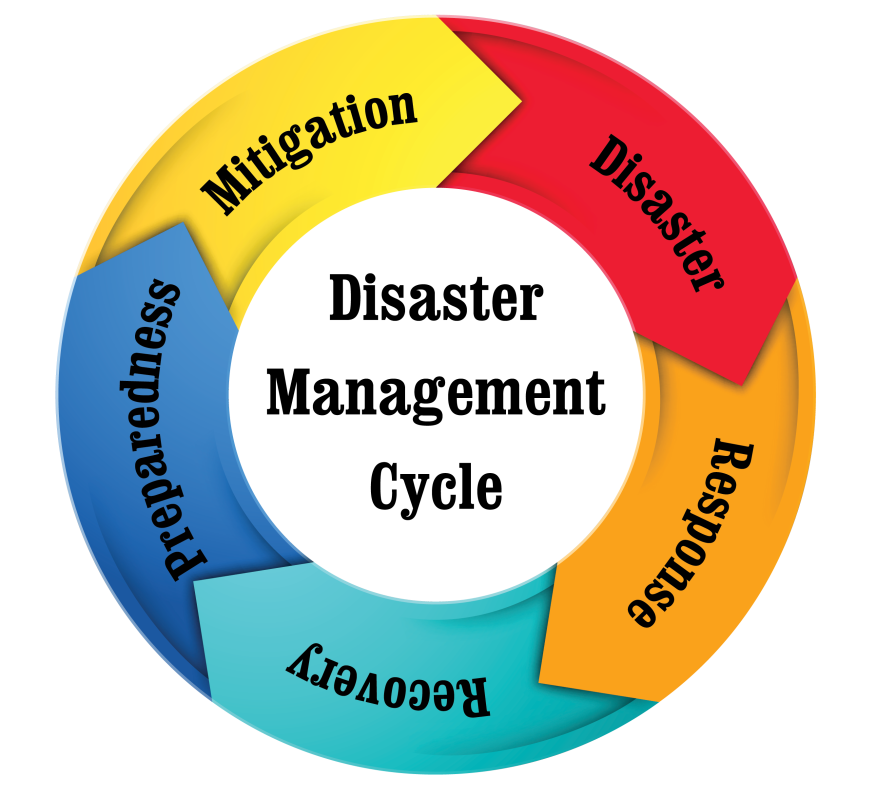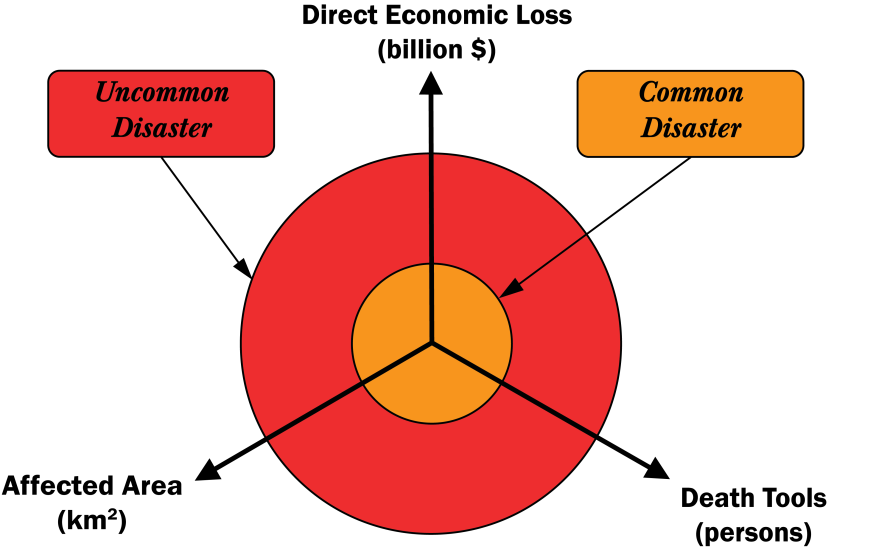
Disaster Management Manual
A manual for practitioners and decision makers!

Disaster Management Manual
A manual for practitioners and decision makers!
From the viewpoint of disasters and the disaster management cycle, as shown in Figure 5.2.1.3.1, we can define a situation as being well managed when the management cycle evolves smoothly.

In case of combined and large-scale disasters, the management cycle does not suffice to properly characterize the situation. Combined and large-scale disasters can be recognized as the situation in which the disaster level is large and complicated, the vulnerability of the potentially affected area is high, and the capacity of the potentially affected area is not enough. Figure 5.2.1.3.2 portrays the differences between common and uncommon disasters.

According to the definition provided by Quarentelly in 1985, “Disaster is a crisis situation that far exceeds the capabilities”.
In case of uncommon disasters, the potentially affected area has less capacity to handle it and is more vulnerable against the uncommon disaster; therefore, the potential consequences are usually great. In case of uncommon disasters, the disaster level is large and so is the disaster. In case of simultaneous occurring disasters, the capacity is not enough to resist against these. Chain-reaction disasters involve situations where the multiple disasters occur consecutively; therefore, the capacity does not suffice to resist against the disasters.